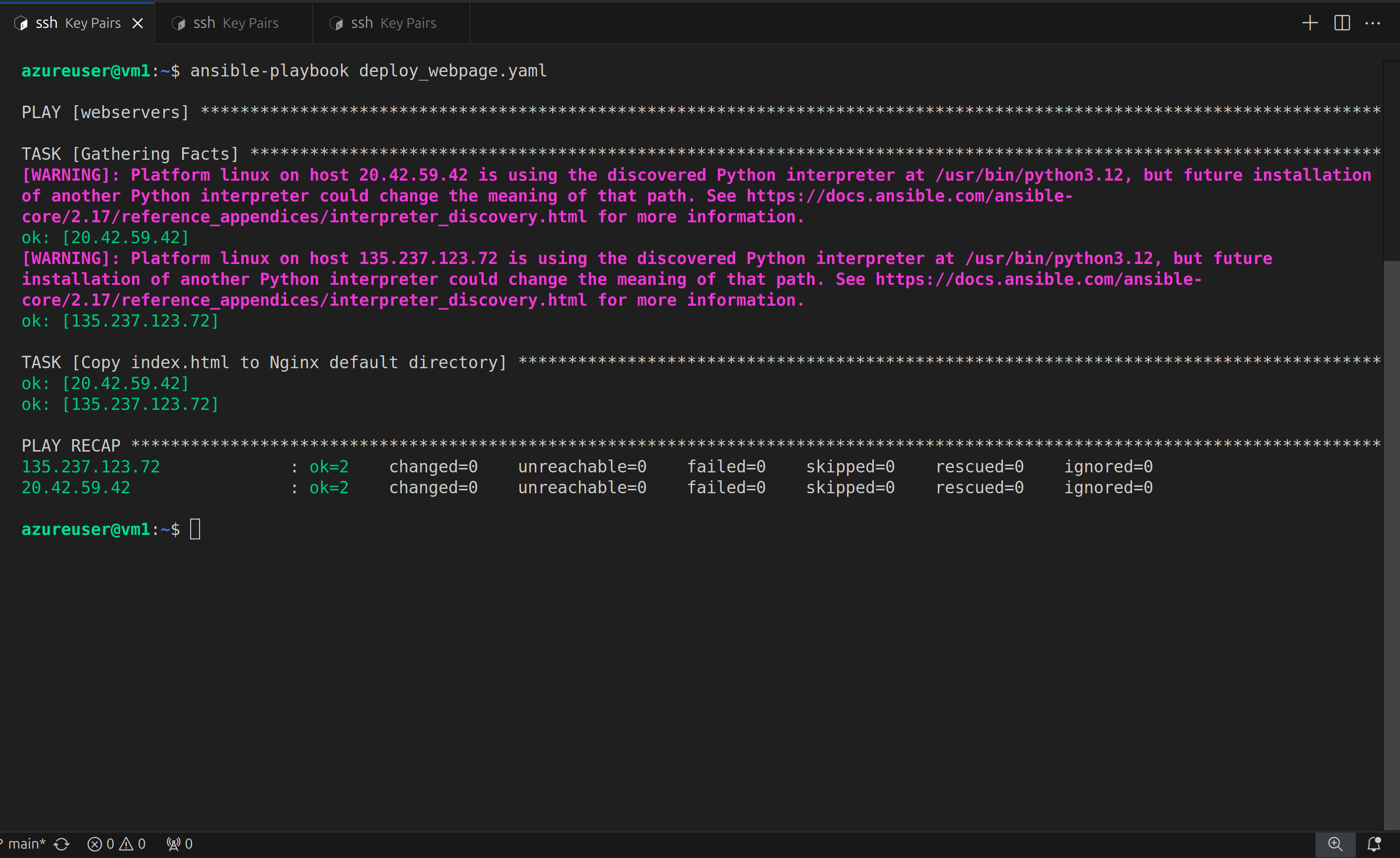Day 59 of 90 Days of DevOps Challenge: Ansible Project🔥 - Deploying a Web App Using Ansible
 Tushar Pant
Tushar PantTable of contents
Ansible has become a crucial tool in our DevOps toolkit, allowing us to automate everything from server setup to application deployment. Today, we'll apply what we’ve learned so far to deploy a simple web application using Ansible on AWS EC2 instances. 🚀
What You'll Learn Today:
Setting up multiple EC2 instances
Using Ansible to manage server configurations
Writing playbooks to install Nginx and deploy a web page
Let’s break this down into simple, actionable steps.
Task 01: Creating EC2 Instances
First, we need to create 3 EC2 instances, which will act as our servers. Make sure all three are created using the same key pair for SSH access.
Step 1: Log into your AWS Management Console.
Step 2: Launch 3 EC2 instances (Ubuntu 20.04 recommended) with the same key pair.
Step 3: Ensure the necessary security groups are in place to allow SSH and HTTP access.
Task 02: Installing Ansible on the Host Server
Next, we install Ansible on one of the EC2 instances (this will be the "host" that controls the others).
# Update and install Ansible
sudo apt update
sudo apt install ansible -y
Task 03: Copy the Private Key to the Host Server
To ensure the host server can communicate with the other EC2 instances, we need to copy the private key from our local machine to the host server.
- Step 1: On your local machine, copy the private key to the host server:
scp -i "your-key.pem" your-key.pem ubuntu@<Ansible_Host_IP>:/home/ubuntu/.ssh/
- Step 2: On the host server, set proper permissions for the private key:
chmod 400 /home/ubuntu/.ssh/your-key.pem
Task 04: Accessing the Inventory File
Ansible uses the inventory file to know which servers to manage. Let’s define our EC2 instances in the Ansible inventory file.
sudo vim /etc/ansible/hosts
In the inventory file, add the following lines to list your EC2 instances under a group (e.g., [webservers]):
[webservers]
<EC2-Instance-1-IP> ansible_ssh_private_key_file=/home/ubuntu/.ssh/your-key.pem
<EC2-Instance-2-IP> ansible_ssh_private_key_file=/home/ubuntu/.ssh/your-key.pem
<EC2-Instance-3-IP> ansible_ssh_private_key_file=/home/ubuntu/.ssh/your-key.pem
Task 05: Writing a Playbook to Install Nginx
Now, it’s time to create an Ansible playbook that installs Nginx on all the web servers.
Create a playbook file, install_nginx.yml:
---
- hosts: webservers
become: yes
tasks:
- name: Install Nginx
apt:
name: nginx
state: present
Task 06: Deploying a Sample Webpage
Finally, let’s deploy a simple webpage using another playbook. Create a file called deploy_webpage.yml:
---
- hosts: webservers
become: yes
tasks:
- name: Copy index.html to Nginx default directory
copy:
src: /home/ubuntu/index.html
dest: /var/www/html/index.html
To execute this playbook, use the following command:
ansible-playbook deploy_webpage.yml

Task Summary
You set up 3 EC2 instances and installed Ansible on one of them as the host server.
You configured the host to communicate with other instances using the same private key.
You wrote Ansible playbooks to install Nginx and deploy a webpage across multiple servers.
With just a few simple commands and playbooks, you’ve automated the entire process of deploying a web application!
What's Next?
In the upcoming days, we’ll explore more advanced Ansible concepts and refine our infrastructure management skills even further. Stay tuned for more hands-on projects!
Subscribe to my newsletter
Read articles from Tushar Pant directly inside your inbox. Subscribe to the newsletter, and don't miss out.
Written by

Tushar Pant
Tushar Pant
Cloud and DevOps Engineer with hands-on expertise in AWS, CI/CD pipelines, Docker, Kubernetes, and Monitoring tools. Adept at building and automating scalable, fault-tolerant cloud infrastructures, and consistently improving system performance, security, and reliability in dynamic environments.